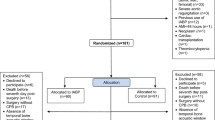Abstract
Objectives: Cerebral complication is an important factor affecting the outcome after coronary artery bypass surgery under cardiopulmonary bypass. One of the causes for cerebral complication is preoperative cerebrovascular stenotic lesion. Here, we have studied the effect of pulsatile perfusion on the rate of cerebral complication due to a cerebrovascular lesion in patients undergoing coronary arterial bypass graft under cardiopulmonary bypass.Methods: 261 consecutive elective patients underwent operation using cardiopulmonary bypass for management of the atherosclerotic ascending aorta. Group 1 consisted of 62 patients with a cerebrovascular stenotic lesion (≧ 75%) identified on a magnetic resonance angiogram or multiple cerebral infarction diagnosed using a computer tomogram. Group 2 consisted of 199 patients diagnosed with no significant cerebral lesion. In Group 1, the systolic blood pressure during cardiopulmonary bypass was maintained at a level of 80 mmHg by means of pulsatile flow. In Group 2, non-pulsatile perfusion was used as usual.Results: The overall hospital mortality was 1.5%, and no mortality was caused by a cerebral event. Only one patient in Group 1 suffered from temporary hemiparalysis. A cerebral complication occurred in only 1.6% in Group 1, and 0.4% overall. The actuarial freedom from cerebrovascular accident after 54 months was 84.4% in Group 1, and 96.2% in Group 2 (p = 0.0011).Conclusions: Management of the atherosclerotic ascending aorta and the use of pulsatile perfusion were helpful in preventing cerebral injury during CABG.
Similar content being viewed by others
References
Breuer AC, Furlan AJ, Hanson MR, Lederman RJ, Loop FD, Cosgrove DM, et al. Central nervous system complications of coronary artery bypass graft surgery: prospective analysis of 421 patients. Stroke 1983; 14: 682–7.
Parker FB, Marvasti MA, Bove EL. Neurologic complications following coronary artery bypass: the role of atherosclerotic emboli. Thorac Cardiovasc Surgeon 1985; 33: 207–9.
Gardner TJ, Horneffer PJ, Manolio TA, Pearson TA, Gott VL, Baumgartner WA, et al. Stroke following coronary artery grafting: a ten-year study. Ann Thorac Surg 1985; 40: 574–81.
Hise JH, Nipper ML, Schnitker JC. Stroke associated with coronary artery bypass surgery. AJNR 1991; 12: 811–4.
Lynn GM, Stefanko K, Reed JF, Gee W, Nicholas G. Risk factors for stroke after coronary artery bypass. J Thorac Cardiovasc Surg 1992; 104: 1518–23.
Mckhann GM, Goldsborough MA, Borowicz LM, Mellits ED, Brookmeyer R, Quaskey SA, et al. Predictors of stroke risk in coronary artery bypass patients. Ann Thorac Surg 1997; 63: 516–21.
Culliford AT, Colvin SB, Rohrer K, Baumann FG, Spencer FC. The atherosclerotic ascending aorta and transverse arch: a new technique to prevent cerebral injury during bypass: Experience with 13 patients. Ann Thorac Surg 1986; 41: 27–35.
Ohteki H, Itoh T, Natsuki M, Minito N, Suda H. Intraoperative ultrasonic imaging of the ascending aorta in ischemic heart disease. Ann Thorac Surg 1990; 50: 539–42.
Blauth CI, Cosgrove DM, Webb BW, Ratliff NB, Boylan M, Piedmonte MR, et al. Atheroembolism from the ascending aorta: an emerging problem in cardiac surgery. J Thorac Cardiovasc Surg 1992; 103: 1104–12.
Wareing TH, Davila-Roman VG, Barzilai B, Murphy SF, Kouchoukos NT. Management of the severely atherosclerotic ascending aorta during cardiac operations: a strategy for detection and treatment. J Thorac Cardiovasc Surg 1992; 103: 453–62.
Bar-El Y, Goor DA. Clamping of the atherosclerotic ascending aorta during coronary artery bypass operations: its cost in strokes. J Thorac Cardiovasc Surg 1992; 104: 469–74.
Andrew MJ, Barker RA. Kneebone AC, Knight JL. Neuropsychological dysfunction after minimally invasive direct coronary artery bypass grafting. Ann Thorac Surg 1008; 66: 1611–7.
Redmond JM, Greene PS, Goldsborough MA, Cameron DE, Stuart RS, Sussman MS, et al. Neurologic injury in cardiac surgical patients with a history of stroke. Ann Thorac Surg 1996; 61: 42–7.
Brillman J. Central nervous system complications in coronary artery bypass graft surgery. Neurologic Clin 1993; 11: 475–95.
Rizzo RJ, Whittemore AD, Couper GS, Donaldson MC, Aranki SF, Collins JJ, et al. Combined carotid and coronary re-vascularization: the preferred approach to the severe vasculopath. Ann Thorac Surg 1992; 54: 1099–109.
Vermeulen FE, Hamerlijnch RPHM, Defauw JAM, Ernst SMP. Synchronous operation for ischemic cardiac and cerebrovascular disease: early results and long-term follow-up. Ann Thorac Surg 1992; 53: 381–90.
Wareing TH, Davila-Roman, Daily BB, Murphy SF, Schechtman KB, Barzilai B, et al. Strategy for the reduction of stroke incidence in cardiac surgical patients. Ann Thorac Surg 1993; 55: 1400–8.
Author information
Authors and Affiliations
Rights and permissions
About this article
Cite this article
Takahara, Y., Sudo, Y., Nakano, H. et al. Strategy for reduction of stroke incidence in coronary bypass patients with cerebral lesions. Jpn J Thorac Caridovasc Surg 48, 551–556 (2000). https://doi.org/10.1007/BF03218199
Received:
Accepted:
Issue Date:
DOI: https://doi.org/10.1007/BF03218199




